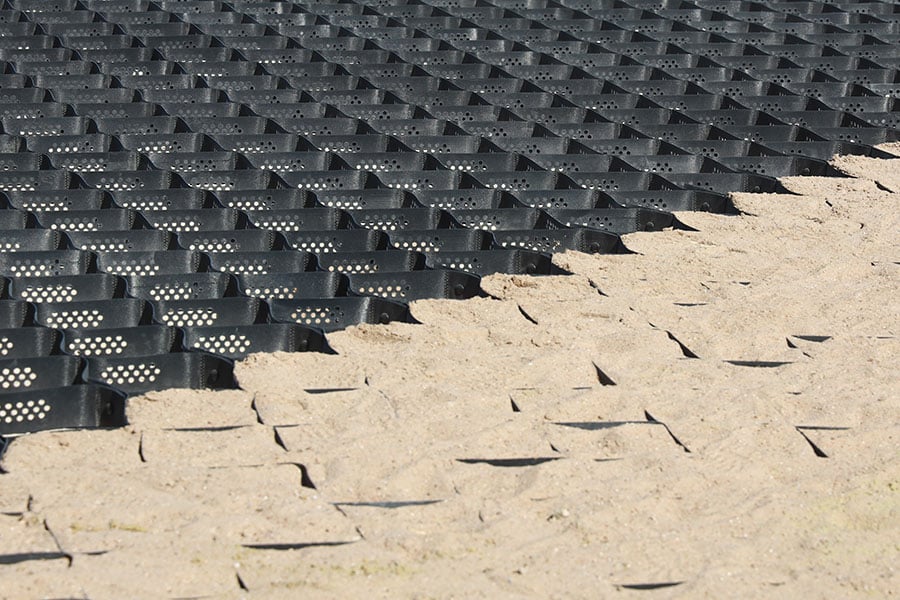Every project is unique which means finding the best infill can be complicated.
What Are the Different Types of Infill?
Geocell can be filled with many different materials, depending on your project’s needs. When choosing an infill material for your geocell, you should first consider the weather and traffic in the desired area. For areas susceptible to flooding and mud, you may need a more permeable infill material. For heavy traffic areas, you may need stronger infill material.
- Topsoil: Topsoil is a preferred infill material for low-traffic areas because it can grow vegetation and add to your landscaping. Topsoil can also be covered in another material such as arena footing.
- Wood Chips: Wood chips are similar to topsoil because they are best for low-traffic areas. Wood chips are flexible and can provide cushion for playgrounds and parks.
- Gravel: Gravel and small rock aggregate is a good infill material for heavier traffic because it is durable. Both gravel and small rocks are permeable which prevents mud and erosion.
- Asphalt: Asphalt infill is ideal for heavy traffic areas. It is strong and provides drainage, which is good for supporting heavy loads.
- Concrete: Concrete is similar to asphalt because it is useful in high-traffic areas. It is durable, long-lasting, and can support heavy loads.
Which Infill is Best for My Geocell?
The most important step in finding the best infill is determining the area and desired use of your geocell project. It is important that your infill is capable of supporting the traffic and loads you need it to, while providing the best waterproofing for your property.
If you are looking to create your very own geocell project but have a few questions, our team of experts is here to help!
BaseCore proudly supplies property and business owners with high-quality geocell materials. If you have any questions, you can access our FAQ page or contact us directly at (888)511-1553.
